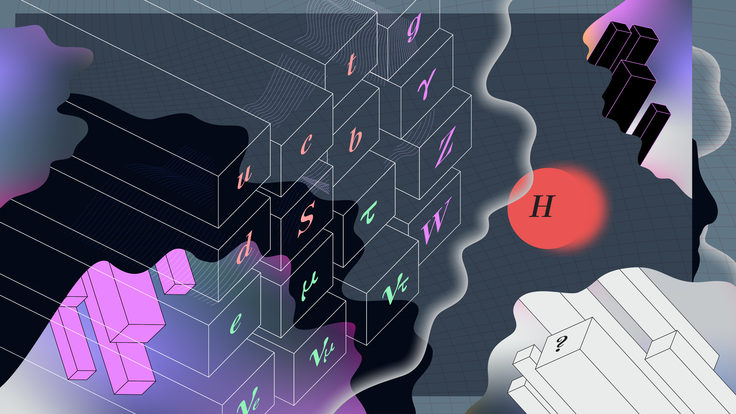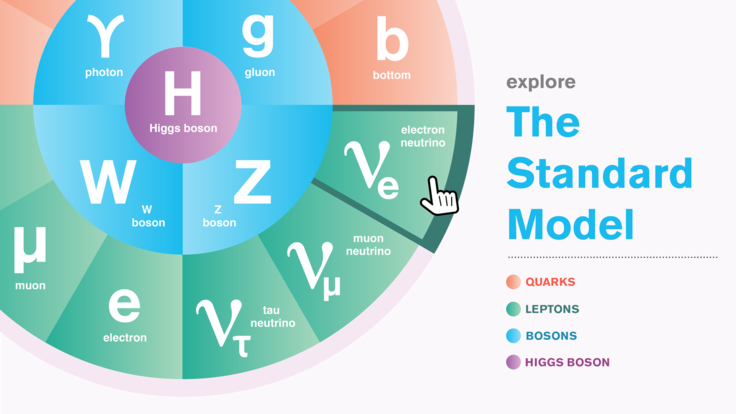Recycle, reuse, re-accelerate
Chugging along in the background, old physics machines are the workhorses behind many cutting-edge projects, from the worlds most powerful X-ray laser to the Large Hadron Collider and a lab that tests microchips bound for Mars.
By Rachel Carr
 |
|
| The two-mile-long linear accelerator at SLAC National Accelerator Laboratory is the second-longest building in the world. After 42 years of contributing to particle physics experiments, its particle beams are being redirected to two new projects: the worlds most powerful X-ray laser and a test bed for advanced accelerator technology. Photo: Peter Ginter |
|
 |
|
| Berkeley Lab is home to more than one old accelerator thats evolved to keep up with the times. The 184-inch cyclotron, for instance, has given way to the Advanced Light Source. Founding lab director E.O. Lawrence (top left) sits overlooking the construction of the cyclotrons domed building, which began in the 1940s. The building and magnets being assembled (above). | |
Its always the new stuff that makes the news. Consider the Large Hadron Collider, the enormous ring beneath the Swiss-French border that has swamped magazine covers, newspaper stands, and even movie screens in the lead-up to its first particle collision. Amidst all the buzz about innovation, you might think scientists cant discover new physics without a brand-new machine.
But a corps of durable, versatile, and carefully maintained accelerators from the 1970s, 60s, 50s, and even 40s proves that time-tested accelerators can still spawn cutting-edge science.
Upgraded, adapted, and sent off on new missions, these veteran accelerators represent recycling and reuse on a grand scale, saving hundreds of millions of dollars while freeing money for projects at the forefront of experimental physics. In fact, in some cases theyve been absorbed into those new projects. Old-school machines feed into Fermilabs Tevatron collider; the worlds most powerful X-ray laser, at SLAC National Accelerator Laboratory; and even the LHC, which surpassed the Tevatron as the worlds most powerful particle accelerator just 10 days after its successful restart in November.
 |
|
| (above) Gov. Mike Rounds of South Dakota toured the Advanced Light Source in June with Berkeley Labs Zahid Hussain, left, and Kevin Lesko. In the far left of this photo you can see all thats left of the original cyclotrona giant magnet yoke, in gray, and the red crane on top of it. Both are still in use. (top right) The historic dome today, with its view of San Francisco Bay. Photos courtesy of Berkeley Lab |
|
Built to last
The first cyclotron, at what is now Lawrence Berkeley National Laboratory, was small enough to hold in your hand (see The particle physics life list in our Aug 07 issue). That diminutive accelerator evolved into Berkeleys 88-inch-wide cyclotron, which accelerated its first particles around the time the Beatles performed their first songs.
This was just post-Sputnik, says Claude Lyneis, a physicist who has helped oversee Berkeley Labs accelerators for 30 years. Legend has it that Glenn Seaborg, the discoverer of plutonium, had gone to Washington, DC, to secure funds for the University of Californias physics program. Asked what was needed to keep American science competitive, Seaborg replied, We need a new cyclotron.
By 1961, the new cyclotron was churning out rare isotopes, variations on the standard chemical elements that have slightly different atomic masses. This helped physicists work out the structure of the atomic nucleus. While the 1970s saw the breakup of the Fab Four, the 88-inch kept right on going. Today, perched on a hill overlooking San Francisco Bay, it still performs superbly.
Whats allowed this legacy of the Atomic Age to keep up in the fast-paced world of experimental physics? A combination of factors, Lyneis says.
 |
For one, theres a lucky difference between studying elementary particles, like quarks or the Higgs boson, and studying atomic nuclei. When the objective is fundamental physics, scientists often seek the highest-energy accelerator they can find, with the aim of packing the most energy, typically measured in electronvolts, into every particle collision.
Thats not so true in nuclear physics, Lyneis says. It turns out that between eight million and 30 million electronvolts, the nuclear physics is not very interesting. Most nuclear structure research is done in the four- to seven-million electronvolt range.
Thats a range the 88-inch could reach even in its earliest years. So rather than increase the machines energy, scientists decided in the mid- 1980s to give it a wider variety of ions to accelerate. Ions are atoms stripped of their outermost electrons; the lightest one is the proton, a hydrogen atom with its single electron taken away. The ions were injected into the cyclotron with a newly invented system called an electron cyclotron resonance ion source, or ECR.
The ECR saved not just us but many cyclotron facilities, Lyneis recalls. It allowed us to expand into heavy ion work. Before the ECR, we could only accelerate ions up to argon. With the installation of our first ECR, we could accelerate ions as heavy as xenon. After we installed a second ECR in the mid-1990s, we were able to run essentially any element for days at a time.
Those upgrades opened the door to new research possibilitiesfiguring out how heavy elements form in exploding stars, for instance, or what keeps the biggest nuclei from breaking apart as theoretical models predict they should. The development of new detectors brought even more opportunities for studying isotopes spawned by the cyclotron. Today, a still-more-advanced detector is under construction.
Its like a better microscope, so it will give us a higher-resolution picture of the nuclei we study, Lyneis says. And that old reliable, the 88-inch cyclotron, will keep doing its part.
I cant predict where we will be 10 years from now, but I know we are blessed at LBL to have had very high-quality engineering behind us, he says. The strength of that engineering is one reason I believe the cyclotron has worked so well.
 |
|
| The installation of the Tandem Van de Graaff accelerators at Brookhaven in 1967; | |
 |
| The Relativistic Heavy Ion Collider (RHIC) accelerates gold and other heavy ions produced at the Tandem Van de Graaff. Photos courtesy of Brookhaven National Laboratory |
Learning new tricks
Solid construction goes a long way, but adaptability may be the key to accelerator longevity. Thats the case at Brookhaven National Laboratory on New Yorks Long Island, where two Van de Graaff accelerators are still humming nearly four decades after they began operation.
Our ability to evolve as a facility has been very useful, says Peter Thieberger, a physicist who works closely with the accelerators.
If youve ever put your palm on the bulb of a basic Van de Graaff generator, you know theyre powerful machines. Even a small one can channel enough charge to make your hair stand on end. Robert Van de Graaff built the first in 1929, using a tiny motor and a dime-store silk ribbon, and by the 1970s, much bigger versions became workhorses of nuclear physics. Brookhaven has two, each of which is called a Tandem Van de Graaff because it accelerates its allotment of ions twice. They were manufactured in the late 1960s and first operated as a pair in 1971.
At the beginning, ours was the highest-energy tandem facility in the world, Thieberger says. In those early days, the focus was basic research into the structure and interactions of nuclei, and the territory was wide open. But soon, other laboratories caught up.
At that point there was talk of shutting down Brookhavens Tandem Van de Graaff facility, Thieberger says. But fortunately we had developed a method for running at a high intensity by upgrading the accelerators so they would propel more particles per pulse. That allowed the Van de Graaffs to take up a new job: injecting heavy ions into a larger Brookhaven accelerator called the Alternating Gradient Synchrotron, and from there into RHIC, the Relativistic Heavy Ion Collider, which turned on in 2000.
All along, flexibility has been the machines supreme virtue.
The Tandem Van de Graaffs have the capability to produce very weak or very intense beams. They can also operate at a wide range of energies, Thieberger says. With a cyclotron, for instance, its usually time-consuming to make large changes in the beam energy or change the ion species, but with a tandem, you can do it much faster. You can also accelerate a large range of ions. You could change from hydrogen to gold in 15 or 20 minutes.
Brookhaven is building a new accelerator to take over heavy-ion injection, but the ever-versatile Van de Graaffs will move on to a new job: testing components for space missions.
With these machines, you can generate a very stable voltage, so you can create beams with very stable and uniform intensity and energy, Thieberger says. That uniformity is important for testing microchips, and the range in intensity is good for simulating space conditions.
In recent years, the test facility has attracted more than 100 companies from the United States, Europe, and Japan that use it to test microchips and other electronics bound for space. Materials tested there have found their way into communication satellites, weather trackers, and NASAs Pathfinder lander, which explored the surface of Mars in 1997.
New applications crop up every month. The facility recently began collaborating with a company that produces extremely fine filters for biological procedures. And after the new RHIC injector comes on line, Thieberger says, the Tandem group hopes to sign on even more facility users.
 |
| (top) In 1970, Brookhaven employees celebrated when both accelerators started running at design energy. (bottom) The Tandem Van de Graaff today. |
Good as new, if not better
The most valuable product of older accelerators may be a new generation of scientists. Several American universities, including UC-Davis, Indiana University, and Michigan State University, host cyclotrons with deep-rooted histories. Those machines play a hands-on role in the training of graduate students, who may never have a chance to work directly on a big machine such as the Tevatron or LHC.
Particularly when university budgets are tight, holding onto older equipment can have tremendous payoffs. Thats a lesson Texas A&M Universitys Cyclotron Institute was pleased to learn not long ago.
For two decades, an 88-inch cyclotron that had helped jumpstart the universitys nuclear science program and that fueled research until 1986 had been gathering dust in a storage building on campus.
We basically mothballed the 88-inch. We sort of bolted it up and left it, says Robert Tribble, director of the Cyclotron Institute. We would have given it away if someone had wanted it. But were very fortunate that we didnt.
Now, the institutes scientists are pulling the machine out of storage, giving it a significant revamping, and sending it back to work. The iron and coils of the original magnet will remain, but new power supplies, vacuum pumps, and other components will allow the machine to generate radioactive ion beams for acceleration in an existing superconducting cyclotron.
Theres a bit of déjà vu, Tribble says, but the program wont look the same this time around. Its a whole different field of research today. When the cyclotron was built, no one was really thinking about the possibility of creating radioactive ion beams and accelerating them. That didnt catch peoples imagination until a decade or two ago.
Perhaps the most impressive aspect of the upgrade is the savings it means for the institute. Building a new 88-inch cyclotron would take something like $10 million, says Tribble. Refurbishing the veteran machine will cost about one-fifth as much.
While the upgrade will not be complete until 2011, the new facilitys potential has already started to lure scientists.
We have groups from around the world coming to use the radioactive beams we can already produce, anticipating the higher-quality beams we will be able to produce after this upgrade, Tribble says.
Tribble hopes the freshly energized facility will also draw new students to the institute, which has a strong history of educating scientists, engineers, and policymakers. Hundreds of Texas A&M undergraduates and graduate students have used the cyclotrons in their studies, Tribble says. University alumni now work in a variety of universities, national labs, private companies, and government agencies.
 |
|
| (above) Technicians Ray Hren and Jim Wendt helped build Fermilabs Cockroft-Walton, and they serve as the main brains behind the machines maintenance today. Hren (top photo, right) and Wendt were in their early 20s when they joined the laboratory in 1968. They were among the first technicians to be hired. (left) An open door reveals the inside of the equipment dome of the Cockroft-Walton at Fermilab. | |
 |
|
| In 1969, Fermilab technicians set up a Cockroft-Walton borrowed from Argonne National Laboratory to test Fermilabs pre-accelerating column and the first tank of the linear accelerator. Photos courtesy of Fermilab |
|
Still kicking particles
Perhaps its not a complete surprise to find working cyclotrons and Van de Graaff accelerators with 40- or 50-year vintages. But you might not expect old-school machines to play a part in the most advanced, ultra-energetic accelerators in the world.
In fact, the protons that zip through the Tevatron get their first kick from an accelerator built around 1970 and based on a design from the 1930s. The look of the Cockroft-Walton generator hasnt changed much since its inception, and the apparatus strange, shiny contours continue to fascinate visitors on tours.
Its really a showpiece, says Ray Hren, who remembers assembling the Cockroft-Walton in a half-built building while wearing his winter coat. Its fun to see visitors get a look at it now. They dont know that its old technology. Its just neat-looking. To them it looks state-of-the-art.
In his 40 years at Fermilab, Hren has seen plenty of changes. The laboratorys original fixed-target experiments gave way to the Tevatron collider, which smashes particles together at nearly the speed of light. Rather than ferrying computer tapes from place to place by station wagon, researchers now send data to colleagues over the Internet. But aside from some incremental updates, the Cockroft-Walton has remained a solid force at the start of the beamline.
Its a very reliable machine, and its a fairly cheap system to operate, Hren says. There have been proposals to replace it with a newer system, he says, but ultimately, the answer has always been the same: We have a good, working system. Why change it?
In California, SLACs two-mile-long linear acceleratorthe second-longest building in the worldwas at the forefront of particle physics research for 42 years, contributing to discoveries that earned three Nobel prizes. When its last particle physics experiment shut down in spring 2008, the old linac wasnt put out to pasture; instead its been incorporated into two projects that are considered key to the laboratorys future.
Today, one-third of the linac accelerates electrons for the Linac Coherent Light Source, the worlds most powerful X-ray laser and an all-purpose tool for exploring matter at the atomic and molecular levels. John Galayda, head of the LCLS accelerator systems division, estimates that this saved the lab well over $400 million. The other two-thirds of the linac will feed into FACET, a test bed for a technology known as plasma wakefield acceleration that could lead to much smaller, cheaper accelerators for science, medicine, and industry (see Crashing the size barrier in the Oct 09 symmetry).
Across the Atlantic, the same combination of practicality and thrift has kept CERNs Proton Synchrotron running for half a century. Incredibly, this old workhorse, the first ring-shaped accelerator at the European laboratory, is an early stop for protons on their way to the Large Hadron Collider.
In the late 1960s, when the plan for CERNs Super Proton Synchrotron was conceived, scientists considered shutting down the original PS. Quickly, however, they realized they could incorporate the PS into the new scheme as an injector, which brings protons up to a moderate speed before unloading them into a chain of more advanced accelerators.
From the time when the SPS came on line, says CERN physicist Simon Baird, it was obvious that the PS was an asset that CERN had and could put to good use.
Over the decades, as the PS moved on to work in a slew of other experimental complexes and now at the LHC, most parts have been replaced. Several new components were installed specifically to meet the needs of the Large Hadron Collider.
There is only a bit of hardware left from the original constructionthe steel of the magnets, Baird says. But the principle is still the same. The design was well thought out. We still use the same designs today when magnet coils need to be replaced. The coils themselves get worn out, but there is no question about changing the design. They got it right.
 |
Click here to download the pdf version of this article.






